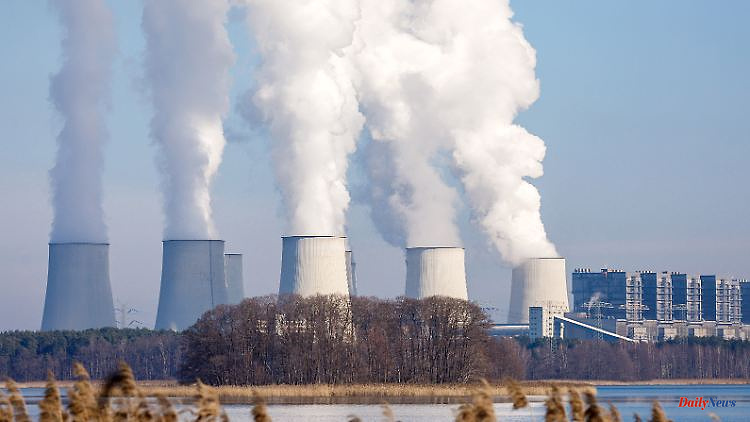Shortly after Russia attacks Ukraine, fearing an energy shortage, Germany not only buys gas and oil, but also coal again - and in considerable quantities. Energy prices are now falling again and it is cheaper to generate electricity from gas. Coal will not make a comeback like this.
When Russia attacked Ukraine almost a year ago, a war ensued not only over land but also over energy. The question was asked early on in Germany: what would happen if Russia stopped supplying gas to Europe? As a result, Germany buys everything it can get - in addition to gas and oil, coal too. So much so that there is now talk of a "coal comeback".
In the meantime, energy prices are falling again - and there seems to be little left of the coal comeback. This is indicated by data from the Ember think tank. According to this, less coal has been converted into electricity in the past five months - and the trend continues to fall.
Ember chief analyst Dave Jones provides detailed reasons for this on Twitter. Accordingly, there was actually a peak in coal-fired power generation last year. All in all, however, coal accounted for only 16 percent of total electricity generation. According to Jones, the increase was primarily due to a lack of energy from nuclear and hydroelectric power in the summer.
The dry summer of 2022 caused problems in southern European hydroelectric power plants. In addition, deficiencies were found in a number of French nuclear power plants, which have since been shut down. In 2022, this led to a European electricity deficit of seven percent compared to 2021. However, this was not offset by coal energy, but primarily by renewable energies such as solar and wind energy. Coal was fed in only one-sixth to fill the gap.
According to Jones, it was helpful that consumers saved a total of 42 percent electricity - and thus also coal. That is also one reason why he is confident that the "comeback of coal" will not occur. The problems with hydro and nuclear power resolved during the year - it rained again and the deficiencies in the French nuclear power plants were also repaired. In this respect, the difficulties should be regarded as special effects. In addition, the expansion of renewable energies is progressing. The coal will hardly be needed in future crises.
Jones himself should be happy about that. He calls himself "CoalFreeDave" on Twitter. The think tank Ember, for which he works, also uses his research to advocate for less coal consumption and a climate policy shift towards renewable energies.
However, independent energy economists such as Andreas Loechel from the Ruhr University Bochum also confirm the basic trends and figures. In the spring of 2022, Loeschel himself was still in favor of reactivating old coal-fired power plants - at that time "under completely different circumstances," admits Loechel. "In the spring of 2022, it was about saving as much gas as possible and creating a safeguard against an impending electricity deficit. Coal was the obvious choice - and that was also the right decision. In retrospect, the situation turned out better than feared," says extinguisher.
It should be noted in Ember's observations that the increase in solar and wind energy is also so high because, unlike the previous year, 2022 was an exceptionally good weather year for renewables. "There was a lot of sun and strong storms, especially in spring. This discussion would certainly have been interesting for the report," says Loechel. In this respect, the thesis is correct that 2022 was a good year for solar and wind energy - but the year before was particularly bad. This also explains the sometimes significant percentage differences between the two years, which Jones repeatedly emphasizes.
Loezel believes that coal will have had its day in the long term. "If nothing unexpected happens, we will see less and less coal-fired power generation in the coming years - simply due to the high price of coal and CO2 certificates and the falling price of gas. Above all, we created freedom for ourselves last year."
How large these spaces are can also be seen from the Ember data. Accordingly, the European camps were filled with almost 13 million tons of coal. Another third was converted into electricity in the 26 reactivated coal-fired power plants. The EU countries therefore bought significantly more than they consumed.
According to Ember, this happened mostly in the summer, when coal was cheaper than gas. Loeschel, on the other hand, cites a much more pragmatic reason. "Many power plants were taken from the reserve - and they first had to fill up their stocks. For the effort to be worthwhile, you need a longer perspective." In that respect it is a special effect.
However, it is questionable whether these inventories are actually needed. That depends primarily on the rapid expansion of renewable energies. On the other hand, the gas price is now at the pre-war level, so that initially gas instead of coal is used to generate electricity.
This article first appeared on Capital.de












